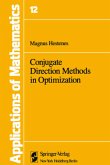In mathematics, complex conjugates are a pair of complex numbers, both having the same real part, but with imaginary parts of opposite signs.[1][2] For example, 3 + 4i and 3 - 4i are complex conjugates. The conjugate of the complex number z z=a+ib, , where a and b are real numbers, is overline{z} = a - ib., An alternate notation for the complex conjugate is z . However, the bar z notation avoids confusion with the notation for the conjugate transpose of a matrix, which can be thought of as a generalization of complex conjugation. If a complex number is represented as a 2×2 matrix, the notations are identical. For example, overline{(3-2i)} = 3 + 2i overline{7}=7 overline{i} = -i. Complex numbers are often depicted as points in a plane, which is a variation of the Cartesian coordinate system (see diagram). The x-axis contains the real numbers and the y-axis contains the multiples of i. In this view, complex conjugation corresponds to reflection at the x-axis. In polar form, the conjugate of rei is re i . Euler's formula confirms this.
Bitte wählen Sie Ihr Anliegen aus.
Rechnungen
Retourenschein anfordern
Bestellstatus
Storno








